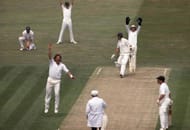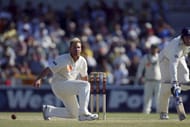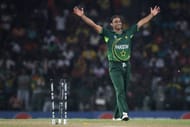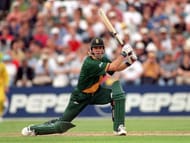It might have been described as “The Gentleman’s Game’ for years now, but cricket has seen a lot of controversies in the past few decades. From ball tampering to match-fixing and from drug usage to throwing, the game’s clean image has taken a nasty hit.Recently, Mohammad Amir, whose young career took a turn for the worse in 2010, made a solid comeback in the domestic circuit and clawed his way back into the Pakistani team after five long years. Here’s a look at five cricketers who came back strongly after being banned:
#1 Ian Botham

The large-hearted poster boy of English cricket was never far from controversies throughout his colorful career for The Poms.
After a tumultuous tour of the Caribbean in 1986, the tabloids were running amok with stories about his off-field antics. Out of the blue, there came a report in the Mail On Sunday, where Botham was quoted to be admitting the use of cannabis, after his previous claims of denial.
This resulted in a series of attacks by the media, questioning his morality and demanding a life ban. Amid a flurry of reactions, the ECB banned Botham for 63 days, ending his participation in the series against India.
He came back in inimitable style, taking wickets of his first and twelfth delivery, also going past Dennis Lillee’s world Test wickets record. The very next month, he capped off the year in style, taking a five-wicket haul against Australia in the Boxing Day Test.
#2 Shane Warne

On the morning of Australia’s opening fixture against Pakistan in the 2003 World Cup, their trump bowler, Warne, flew back home after being tested positive for a banned diuretic. Cricket Australia banned Warne for a year, raising questions about his career.
Warne came back in 2004, fitter and better. He scalped an astonishing 26 wickets in three Test matches against Sri Lanka on their home soil. That included four consecutive five-wicket hauls in the Galle and Kandy Test and was named the Man of the Series.
By August 2005, when Warne became the first person to break the 600-wicket barrier, he had taken 82 wickets in 15 Test matches. When he was finally done after the Ashes in 2006, he had scalped 708 wickets, the most by anyone, before being toppled by Muttiah Muralitharan.
#3 Shoaib Akhtar

The enfant terrible of Pakistan cricket had his fair share of controversies in the green jersey. From disciplinary breaches to drug abuse and illegal action, Akhtar has been through it all.
His first comeback after being banned was in 2006. Coming back in the team after a year, he proved his worth with figures of 9-0-43-4. He took 7 wickets in four matches against India, before going into the wilderness for two more years. He was banned for five years in 2008 for questioning the PCB’s method of awarding contracts to players. He was written off by experts and fans alike, with very little hope of making a comeback in the future. He, however, was back in the thick of things by 2010, taking three wickets on his return, and ending his career only after playing the 2011 World Cup.
#4 Herschelle Gibbs

The late 1990s and early 2000s was a dark period for cricket, with allegations of match-fixing shrouding the game’s popularity as it entered the new millennium. Players from Australia, Pakistan, South Africa and India were convicted of fixing matches, which resulted in any many prominent players getting banned.
Gibbs, then 26-years old, and fast bowler Henry Williams had each accepted a 10,000-pound bribe to underperform in a match against India by their captain, Hansie Cronje. He was let off with a paltry ban of six months till the end of 2000, and a fine of 6,100 pounds. The following years saw him being repeatedly questioned by the Delhi Police, along with Nicky Boje.
He came back in 2001, averaging more than 40 that year, with three centuries in ODIs. He also had a prolific year in Tests, averaging 54 with three centuries and six fifties. That included a 196 against India at Port Elizabeth, where Gibbs stayed at the crease for seven and a half hours, scoring more than half of the South African total.
#5 Marlon Samuels

Quite early in his career, Samuels was earmarked for greatness due to his composure and technique. 15 years into his international career, he has still not been able to give justice to his potential, largely because of the many controversies he has got himself into.
In 2008, he was banned for two years by the ICC after the Indian police accused him of giving out information to a bookie for an India-West Indies ODI in 2007. Upon his return to Test whites, he top scored with 57 against Pakistan at Basseterre.
Since his comeback in 2011, he has scored seven ODI centuries, as compared to two centuries in his first eight years of international cricket. As he eased his way back into the team, he lent solidity to the middle order that had been lacking for quite a while in the West Indian setup.
With 386 runs in 5 innings, the 2012 tour of England turned out to be one of the highlights of his career. He also scored a plucky 78 in the World T20 finals, giving West Indies a much-awaited world title. He also scored his first double century in Tests that year, a sublime 260 against Bangladesh.
Follow IPL Auction 2025 Live Updates, News & Biddings at Sportskeeda. Get the fastest updates on Mega-Auction and cricket news
